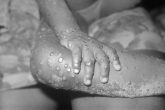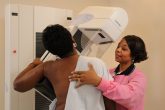
Current research on breast cancer is improving the treatment and helping women worldwide lower their risk for breast cancer. In Sub-Saharan Africa, the picture is not quite as rosy. Poor health awareness and limited access to timely and proper medical treatment are massive obstacles to breast cancer survival for African women.
Facts about breast cancer in Africa that you may not know
Breast cancer develops when cells in the breast grow out of control. As the cancer cells grow, they can begin to push on or damage nearby organs, blood vessels, and nerves causing symptoms.
- Breast cancer is the most commonly diagnosed cancer among African women and worldwide.
- It is second only to cervical cancer as the leading cause of cancer death among women in Africa.
- Rates of cancer have doubled in many African countries over the last 20 years.
- The breast cancer death rate is 42% higher in black women than in white women.
- Black women have higher rates of aggressive breast cancer, which has lower survival chances.
- Most women with breast cancer in Africa seek medical attention in the late stages of the illness. Often, there’s not a lot that can be done at that point to save the patient.
- Poor health awareness on the part of women combined with the lack of early detection programs causes the huge problem of late diagnosis.

The double-barrel approach to beating breast cancer is early detection and prevention.
Given the problem of late diagnosis of cancer in Nigeria and other Sub-Saharan countries, early detection through screening tests is the best recommendation. Screening tests can find cancer at an early stage, when it may be easier to treat or cure.
Screening tests for breast cancer include:
- Mammogram: A mammogram is an X-ray of the breast. It can detect breast cancer early, long before you can feel a lump or have other symptoms. Early breast cancer is easier to treat. Having regular mammograms can lower your risk of dying from breast cancer. The recommendation is yearly mammograms from age 40.
- Breast Magnetic Resonance Imaging (MRI): A breast MRI is a special scan of the breast. MRI is used along with mammograms to screen women who are at high risk for breast cancer.
A clinical breast exam is an examination by a doctor or nurse, who uses his or her hands to feel for lumps or other changes.
A breast self-exam is when you check your breasts for lumps, changes in size or shape of the breast, or any other changes in the breasts or armpit. It should be your monthly healthcare routine. An excellent time to check your breasts is about two weeks after the beginning of your menstrual cycle.
Being familiar with how your breasts look and feel can help you notice changes more quickly. Report any breast changes to your doctor immediately.

Taking charge of preventing breast cancer
Some of the things that put you at risk for breast cancer such as genetic, environmental, and societal factors, including access to health care, are not within your control. Lifestyle factors, however, such as not exercising, alcohol use and being overweight that influence your risk of developing breast cancer are within your control.
Research strongly suggests that even if you have the genetic tendency for the condition, you can make lifestyle changes that can reduce your risk for breast cancer:
- Maintain a healthy weight. Studies reveal that being obese or overweight increase your risk of developing breast cancer. Losing even a little weight has tremendous health benefits and is an excellent way to start.
- Be physically active. Research suggests that women getting regular exercise lower their risk of breast cancer compared to women who don’t exercise. Doing even a little exercise beyond your current daily routine can have huge health benefits. Walking briskly for 20 -30 minutes 3 times a week is a great start.
- Limit alcohol. Several studies confirm that drinking alcohol increases the risk of breast cancer in women. If you do drink alcohol, the American Cancer Society recommends that you limit yourself to just one drink per day.
- Don’t smoke. Growing evidence shows that heavy smoking for a long time might be linked to a higher risk of breast cancer, particularly if you begin smoking before you have your first child. There are no health benefits to smoking…none!

